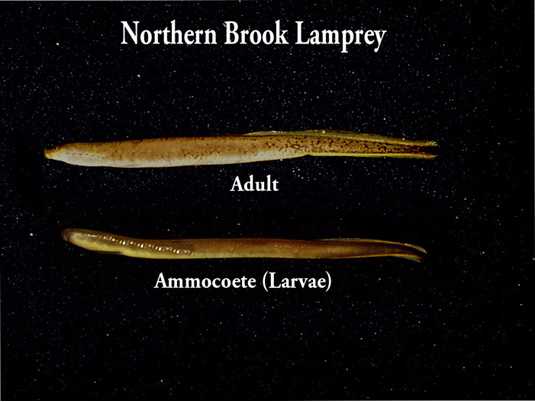 |
| Life Cycle of the Sea Lamprey |
 |
| Reproductive Phase |
 |
| allowing for the exchange of sperm.. This spawning occurs every five to ten minutes until the female produes about 60,000 eggs. Only about 14% are lucky enough to deposited in the nest. Of those that reach the nest, over 90% will survive birth.. Shortly after spawning, both the male and female die. Those adults that do not spawn die, due to an accumulation of metabolic waste. |
| In April, the male lamprey builds a horseshoe-shaped nest in the gravel. The female then anchors herself using her oral disk near the nest where the male wraps himself around her. The genital pores make contact |
| Sedentary Phase |
| After the eggs hatch (two to three weeks after nesting), the larvae, 6.4 mm. in length, drift downstream and settle into the mud. The larvae are blind, toothless, and act as a filter feeder. |
| Free Swimming Phase |
 |
 |
| After at least four years, when the lampreys reach a length of 15 cm., they metamorphise into adults and retreat from the mud. The metamorphesis begins in September and involves the lamprey gaining eyes, teeth, and a grasping tongue. Their coloration changes from brown to a blue-gray back and silver-white belly. The lampreys leave the streams and migrate to the Great Lakes. Lampreys no longer filter-feed, but act as a parasite sucking the blood out of other fish. When the sea lamprey reached 45 cm in length (12-20 months), they begin spawning and the cycle is repeated. |
| Courtesy Lamprey Family |
| Courtesy Lamprey Family |
| A row of spikes called barbules around the larvae's mouth acts as a strainer to catch food. Scientists onc believed the larval stage to be a completely different genus and so the term ammocoete is still applied to describe the lamprey in the sedentary phase. |
| Courtesy What is a Lamprey |